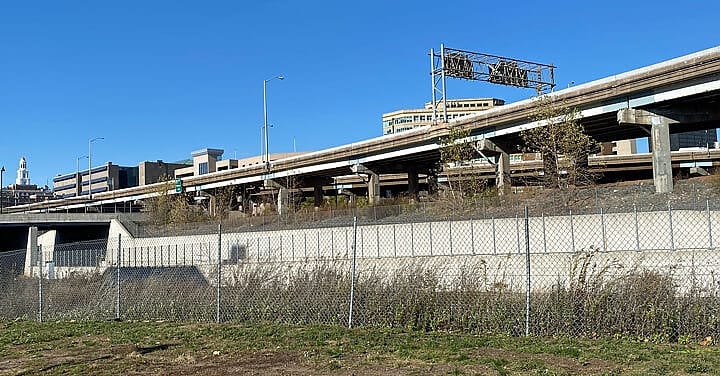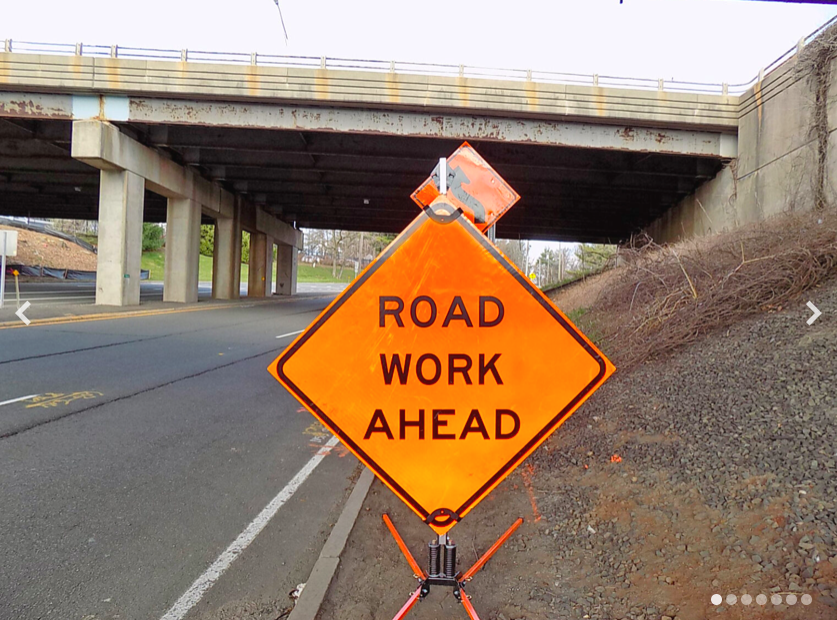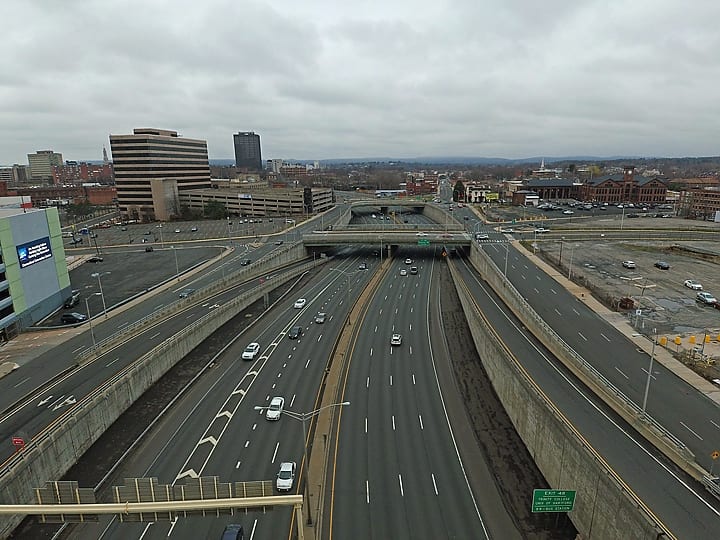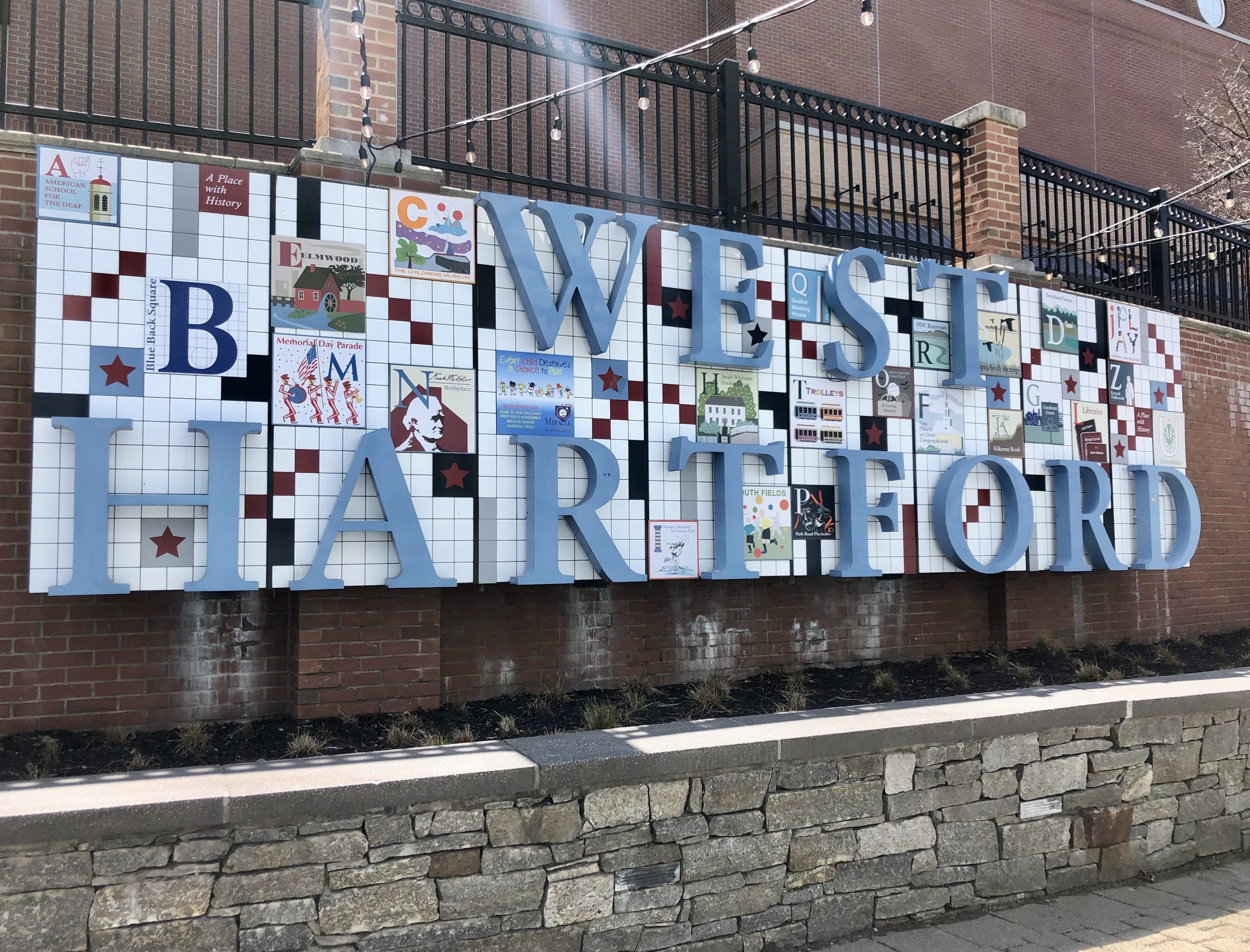Connecticut Leaders Hoping for Influx of Transportation Funding from Biden Administration

Audio By Carbonatix

I-84 viaduct in Hartford. Photo credit: Christine Stuart (courtesy of CTNewsJunkie.com)
A project to rebuild the I-84 bridge in West Hartford, and rework the lanes between several exists is proceeding.

Widening of the I-84 bridge that crosses Ridgewood Road is part of a DOT project in West Hartford. As recently as last year, officials were hoping to tie this project to tolls. Project website (we-ha.com file photo)
By Hugh McQuaid, CTNewsJunkie.com
Gov. Ned Lamont’s unsuccessful push to toll state highways was an unpopular answer to a persistent problem: Connecticut’s transportation fund is drying up. And with no political appetite to revisit tolls, hopes rest on a federal Band-Aid.
As Connecticut’s roads, bridges, and highways continue to age and demand repair and replacement, the state faces a dilemma. Its Special Transportation Fund, which pays for infrastructure projects and the operation of the Transportation Department, is supported by fuel taxes, which diminish as vehicles become more efficient.
“We have a funding mechanism that is failing,” said Norman Garrick, a professor at the University of Connecticut’s School of Engineering. “As more people switch to electric cars, as inflation eats away at the rate at which we tax gas, we’re going to have to start to make hard decisions about what we’re going to do because that pile of money is going to be worth less and less.”
Garrick pointed to tolls as a possible solution. But the professor also acknowledged that Connecticut residents find this solution extremely controversial.
It was controversial in the legislature as well. The Lamont administration lobbied hard to pass some form of a tolls bill during the last two legislative sessions, but the issue proved deeply unpopular. Ultimately, neither Democrat-controlled chamber of the legislature even called the issue for a vote.
Immediately after this month’s election, the governor was asked whether he had given up on tolls. He indicated he had no plans to pursue them again when the legislature comes back into session in January. Lamont said he would put “other alternatives” on the table for lawmakers to consider.
“What I haven’t given up on is the fact that we have a transportation fund that’s slowly going bankrupt, the fact that California and others are calling for 100% electric cars over the next 10-15 years. We know we’re going to have to change the way we fund transportation,” Lamont said. “Let’s face it, my solution wasn’t very popular with Republicans or Democrats but nor did they have a solution of their own.”
Some transportation advocates have called on Connecticut to participate in an initiative that raises gas prices to fund investments in cleaner transportation. In January, Lamont declined to endorse the proposal, which is called the Transportation and Climate Initiative, but this week the Governor’s Council on Climate Change again raised the issue in a report on strategies for mitigating climate change.
Asked about it Thursday, the governor hedged, saying the legislature should be thinking about the proposal, but he did not endorse it.
“It’s something a lot of the regional governors are thinking about and one of the ideas I think the legislature ought to be thinking about,” he said. “Look, I’m sympathetic to realistic ways that we can fix our transportation system because it’s key to our economic future. That’s one of several options the legislature’s got to consider.”
Without a systemic solution, Lamont said that the state would likely look to borrow money to cover some of the cost of supporting the fund. The governor said he does not “love the idea” but with interest rates at historic lows, it makes sense.
“This is the time to be making long-term investments, so borrowing will be part of our strategy,” he said.
The administration is also hoping for aid from President-elect Joe Biden, of whom Lamont was an early supporter. Earlier this month, Lt. Gov. Susan Bysiewicz said she expected to see an influx of federal funding from the Biden administration to support transportation upkeep, similar to money the state received from the Recovery Act following President Barack Obama’s election.
On Thursday, Lamont said he believed Biden would be able to get legislation passed.
“My strong feeling is, when it comes to infrastructure, there’ll be some bipartisan support. President-elect Biden has a way of being able to work across the aisle and hopefully get something done. Nobody can just say ‘No,’” the governor said.

I-84 in downtown Hartford. (Courtesy of CTNewsJunkie.com)
One of Connecticut’s most visible infrastructure problems is the raised section of Interstate 84 that runs through downtown Hartford. Advocates have long eyed the viaduct for total replacement. Many say the aging stretch of highway, built in 1965, has had a negative impact on the Hartford community and economy.
“That was one of the many projects that helped to spiral down the economy of the city because it divided the city,” Garrick said. “It’s changed the relationship of the downtown to its neighborhoods. It’s encouraged people to drive through and into the city rather than walking.”
The issue is under consideration at the Department of Transportation. Late last year, the department backed away from its leading plan to lower the highway, which was expected to cost between $4.3 and $5.3 billion. It is now conducting a more wide-ranging study of the viaduct and how it relates broadly to highway congestion in the Hartford and East Hartford area.
In June, the department concluded $60 million in repairs to the viaduct. These temporary fixes are expected to help extend its lifetime through 2040. The repairs reduce the urgency of replacing the aging infrastructure while the agency conducts its study, which is expected to be completed in late 2022.
“The department is looking at a broader, more holistic view at mobility in the region, not just limited to the viaduct – in a new study we are referring to as the Greater Hartford Mobility Study,” DOT spokesman Kevin Nursick said in an email.
Some residents are pushing for dramatic changes. U.S. Rep. John Larson has long been an advocate of an ambitious project to reroute the highway through a proposed tunnel. But regardless of whether the project ultimately includes a tunnel, Larson said it must position Hartford as an easily accessible hub between New York and Boston.
“There’s a grand opportunity here to make Hartford about an hour’s trip from New York or Boston by train and to set us up as a hub of commerce,” Larson said. “It’s time to move on to a vision of the future that’s intermodal, links us to the airport, which will only help commerce and business activity as well as making sure that rail is incorporated into this.”
Like the governor, Larson is betting on federal dollars to make these infrastructure goals a reality. At the moment, control of the U.S. Senate remains unresolved pending the results of two January runoff elections in Georgia. Whichever way those elections go, Larson said he is hopeful Congress can pass transportation or major infrastructure legislation.
“We have a very strong case for why this needs federal funding and the urgency attached to it,” he said. “I think it’s going to happen sooner rather than later because I think President [elect] Biden recognizes that in order to put the country back to work and fulfill some of these promises, they have to deliver on an infrastructure bill.”
In the long run, Garrick said Connecticut needs to arrive at a sustainable funding solution for its infrastructure obligations and begin to plan its land-use goals rather than reacting to immediate problems. He said residents and policymakers should try to draw connections between transportation infrastructure and systemic problems like climate change and racial justice.
“That’s what bothers me about the future for us. We just don’t really make connections or think about long term planning,” he said. “The only way is if we start to make those connections and start to make plans for the future.”

EDITOR’S NOTE: Coverage of the 2020 Multimodal and Transit Summit, as well as a follow-up series on related transportation issues, is being partially underwritten by the Transport Hartford Academy at the Center for Latino Progress.
Underwriting is funding for journalism that will be reported and produced independently, without prior review by the funder before publication.
Republished with permission from CTNewsJunkie.com, all rights reserved.
Like what you see here? Click here to subscribe to We-Ha’s newsletter so you’ll always be in the know about what’s happening in West Hartford! Click the blue button below to become a supporter of We-Ha.com and our efforts to continue producing quality journalism.



